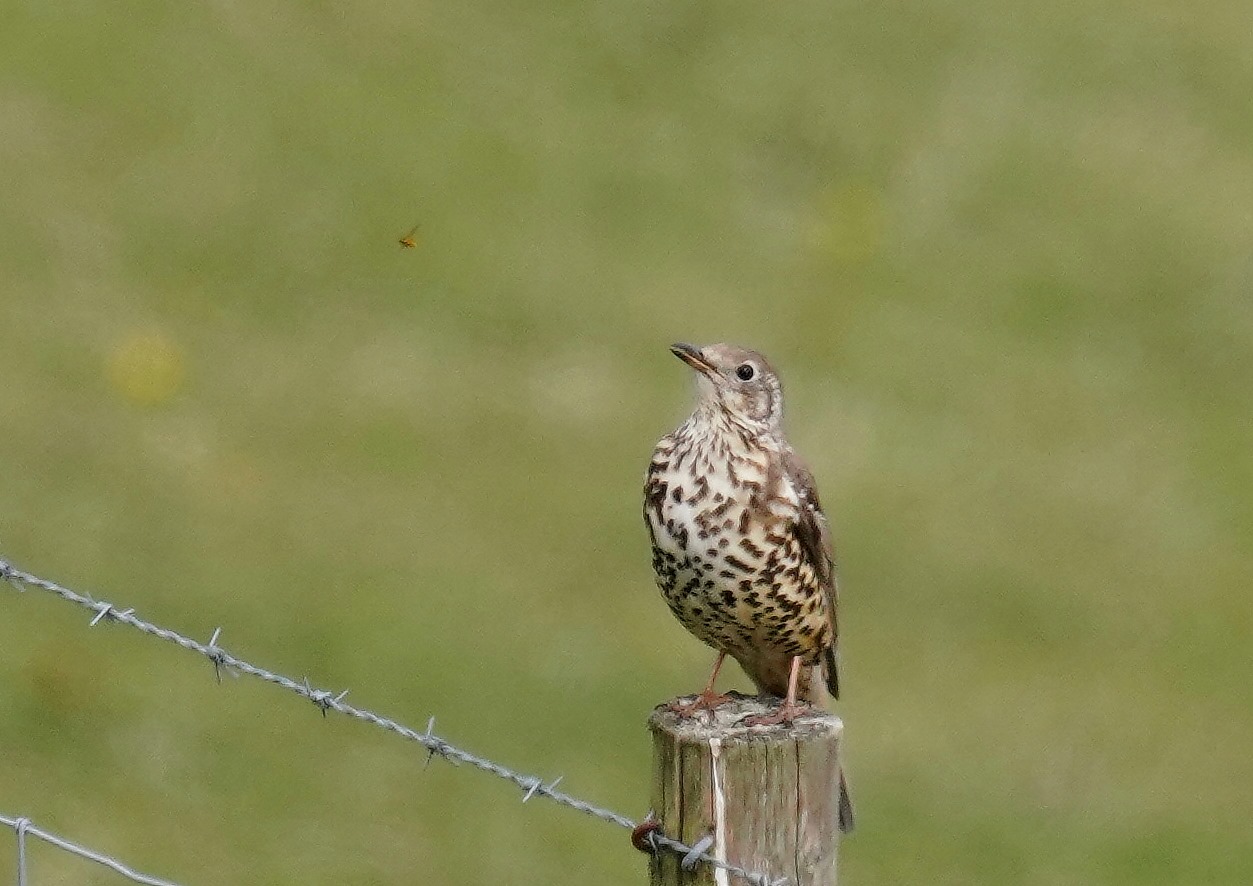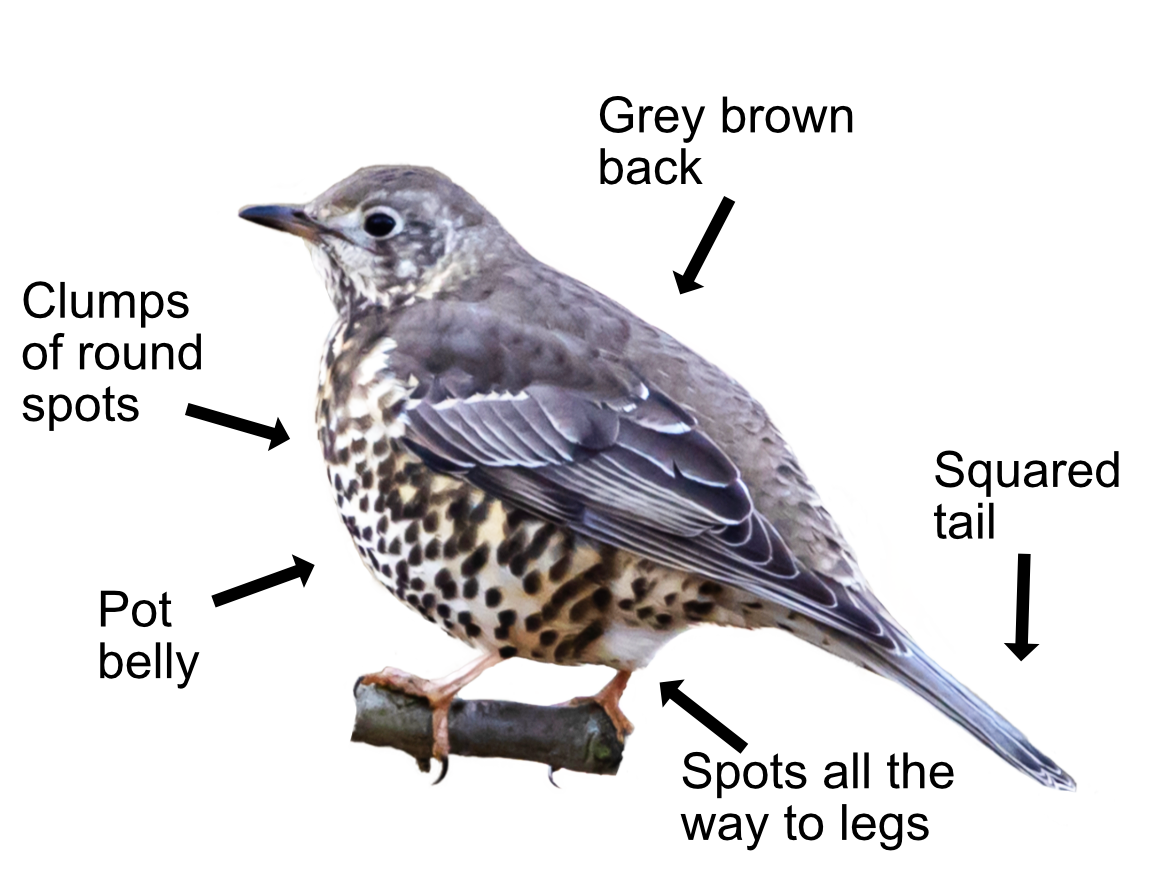
If Song Thrushes are operatic tenors and Blackbirds are folk singers, then the Mistle Thrush sings the blues. The Mistle Thrush got its name from being such a greedy pig for mistletoe berries. The Mistle Thrush is also called a 'storm cock' for singing his melancholy song in the rain. A great stage name for a blues singer.
The Mistle Thrush is larger and greyer than the Song Thrush, standing more upright and bold with a pot belly. It has grey brown upper parts, a small head, a long squared tail, and big wings. The breast is pale with large spots which are different from the Song Thrush's by being more round, less arrow shaped, and going all the way down to the legs, with clumps of spots forming blotches on the upper breast sides. These spots do not form lines on the flank, but may form a necklace pattern around the throat. There is a pale, vertical cheek spot. In flight, the under wing and tail edges are a distinctive white. The Mistle Thrush has a fast, almost leisurely flight.

The male has a loud, far-carrying song which he delivers from the highest treetop. He can sing for long periods at a time, especially when feeling a bit down. The song is like a simple Blackbird song with just three to six flutey notes. The verses are repeated with small variations similar to the rhyming lines of a blues dirge and with each verse only lasting about a second. The Mistle Thrush sings from mid-winter but by May quietens down as it is harder to be depressed when the weather is fine. The alarm call is different to a Song Thrush's and sounds like a clockwork soldier unwinding rapidly.
The Mistle Thrush feeds in the open, away from cover, on insects like beetles, worms, slugs, and snails (you would sing the blues after having slugs for lunch). They also eat berries with rowan, mistletoe, yew, and holly being particular favourites. In winter, once the Mistle Thrush has found a berry-laden tree, it will guard it from any would-be thieves and in turn, helps the tree to thrive by accidentally 'planting' its seeds while wiping its bill or dispersing the seeds in its poo.
The Mistle Thrush nests as early as February. The female builds a cup-shaped nest of grass roots and leaves held together with a bit of mud, in a tree and lines it with finer grasses. The 3-5 eggs hatch after 12 days and the youngsters can fly 12 days later. The parents look after the youngsters for a further 14 days while they are being home schooled in slide-guitar. They usually have 2 broods. The parents will fearlessly defend their nest against potential predators, including humans and cats.
Mistle Thrushes are normally found as individuals or in pairs for much of the year, although whole families may forage together in late summer, and groups may merge to travel round in large chattering flocks, stripping ripe berries from trees and bushes in gardens, parks, or woods - anywhere there are good berries to be found. These flocks are recognisable as they often fly in a line.
About 200,000 pairs of Mistle Thrush can be found thinly spread throughout Britain. They are mostly locally resident, though the ones further north can be a bit nomadic in winter, wandering to the warmer south for a jamming session. The Latin name is 'turdus viscivorus', where 'turdus' is the Latin for thrush (not berry poo), and 'viscivorus' means mistletoe eater.